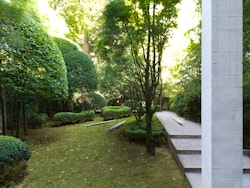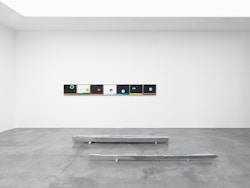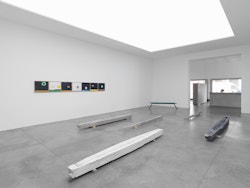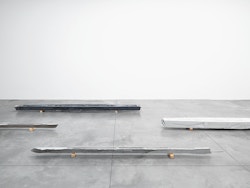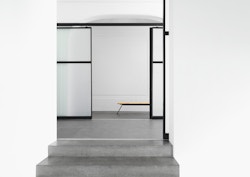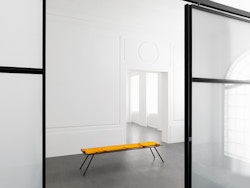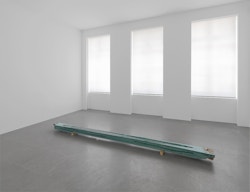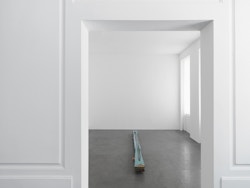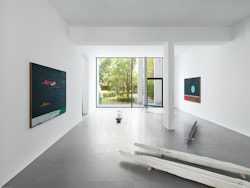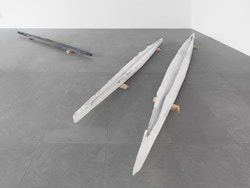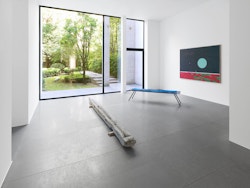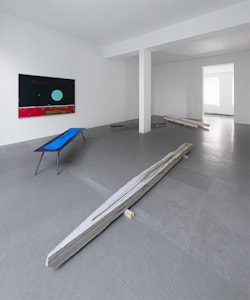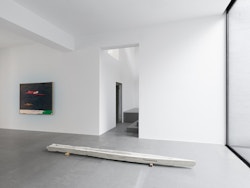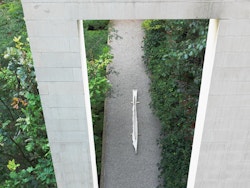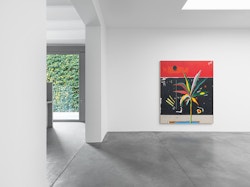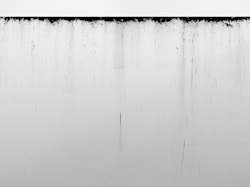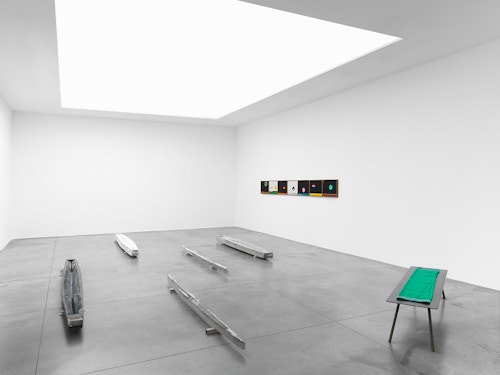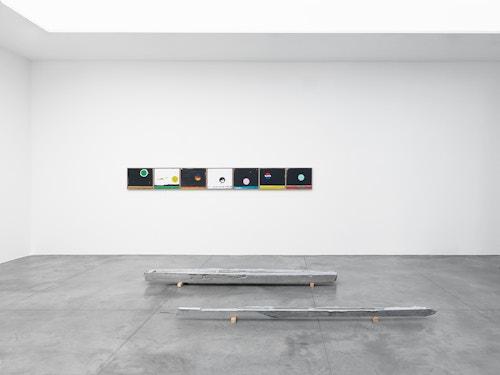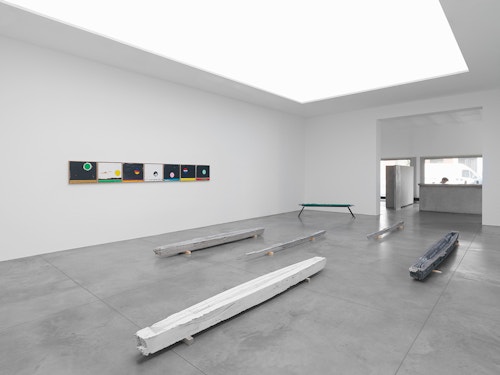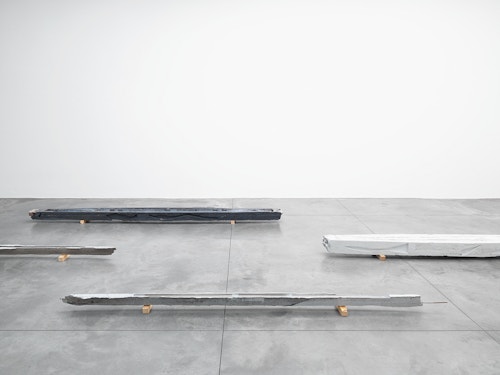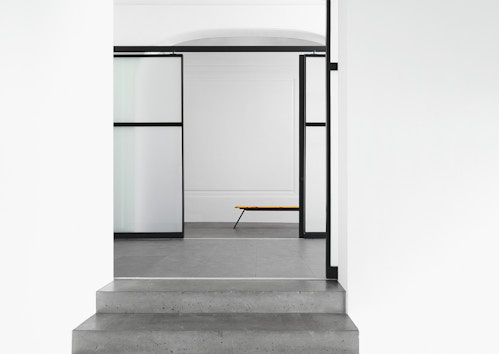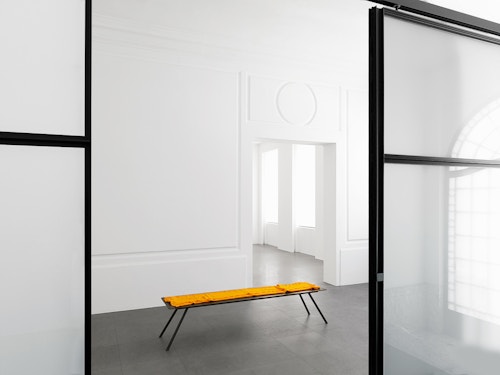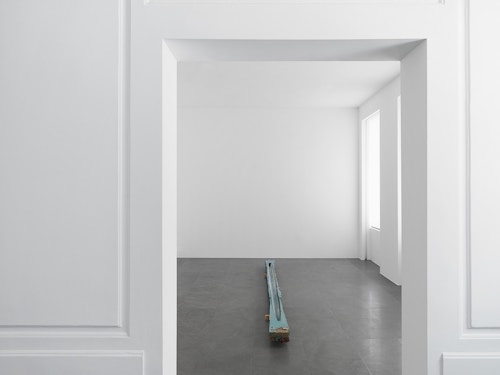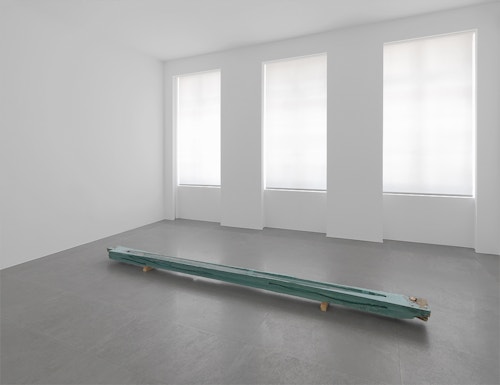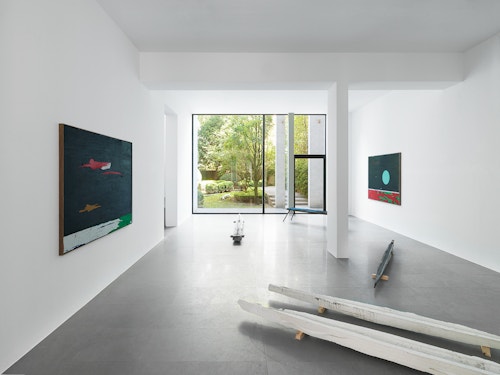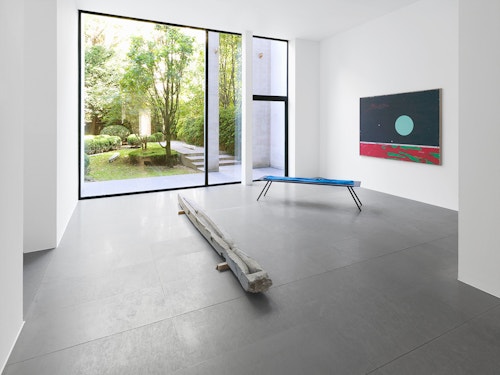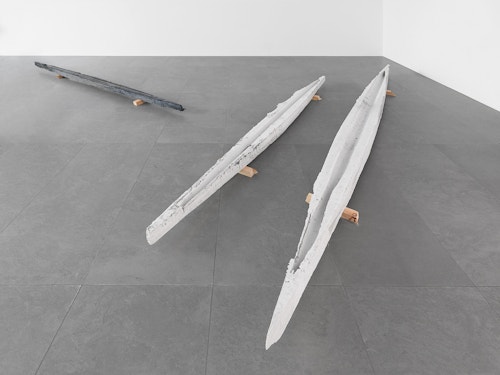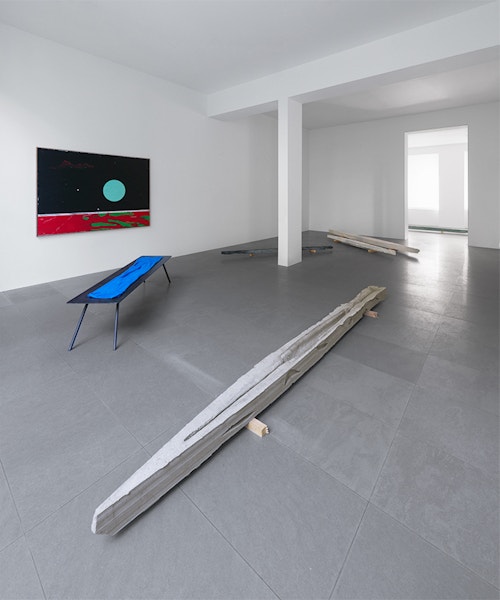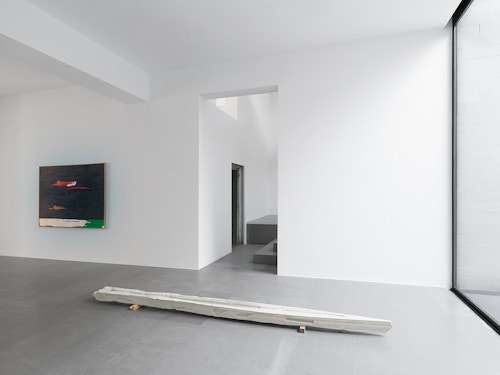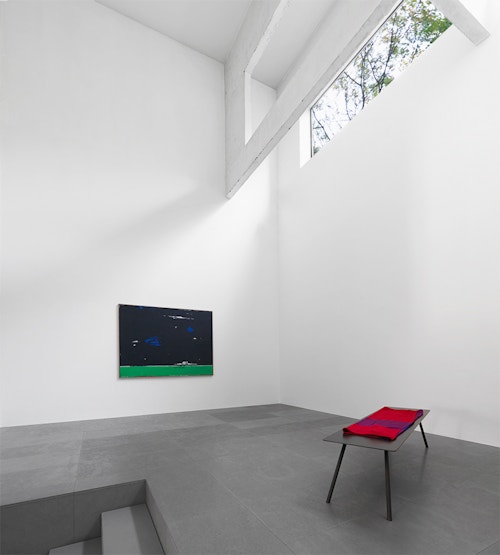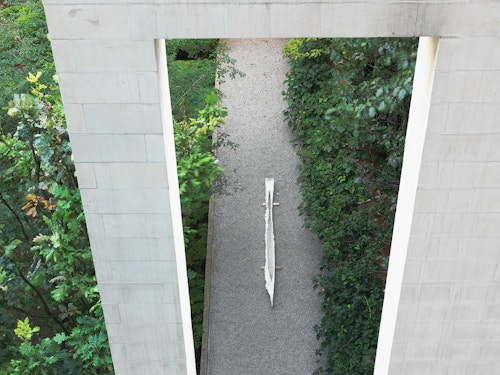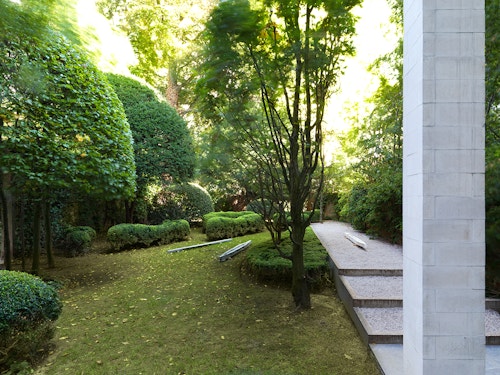
Harold Ancart Winning Colors
For his new show, Harold Ancart is plunging the Xavier Hufkens gallery into an aquatic world: seascapes with shimmering sunsets bound the horizon towards which pirogues seem to be sailing. These pictures, for which the artist has upset the usually vertical format of his works, present simplified compositions, which come down to a line and a circle. This reduction enables Ancart to concentrate on working on color, as is indicated by the exhibition’s title. Although most of the seascapes on view seem to be nocturnal, vivid colors explode in the skies and make the surface of the water iridescent. These powerful chromatic contrasts, some of which call to mind the abstract painting of Clyfford Still, bring forth psychedelic visions. Sun and moon merge in skies crossed by clouds and many-colored birds, above richly adorned seas.

The sculptures on the floor seem to have been swept along in one and the same chromatic momentum. Previously, they kept the color of the material they were cast in, but today the concrete sculptures are pigmented. On the floor, their stretched silhouettes thus draw lines of color, which echo those we find in the pictures.
The freeing-up of the colors seems to go hand-in-hand with an emancipation of forms. In his earlier work, Ancart often scaled form down to a trace, an accident, a fleeting deposit of pigments, but he generally preferred geometric shapes. In his new sculptures, he extends his exploration of the fragile balance between shape and shapelessness, completeness and incompleteness, perfection and imperfection, through more organic silhouettes. Some of them conjure up the form of a fish or boat, while their hollow interior reminds us of the form of a canyon, or a drinking trough when filled with water.
The enigmatic titles of these sculptures, Black Caviar, Secretariat, Grand Flaneur, in reality make reference to famous race horses. The idea of movement, and beyond this of pursuit and flight, thus informs these objects which, set on the ground, seem to have been stopped in their tracks. As at a race course, benches, also designed by the artist, invite us to take a seat to look at the now motionless works. On these benches are laid blankets of the type handed out by various airlines to their passengers on long-haul flights. The promise of a distant journey thus seems to be being made to spectators. Comfortably wrapped in the warmth of the piece of fabric, we are invited to journey towards imaginary horizons, where suns are red and water phosphorescent.
Often reduced to a mere holiday destination, the sea is above all the source of life itself. As a symbol of the infinite, it offers the promise of new adventures, still unconquered lands, and virgin cultures. Like the Dutch artist Bas Jan Ader, who, almost forty years ago, tried to cross the ocean in a small sailing-boat, Harold Ancart seems to be guided by that same inexorable “search for the miraculous”
Harold Ancart (b. 1980, Brussels) lives and works in Brooklyn, New York. He has recently exhibited at Art Basel Unlimited (2014), the M building in Miami (212) and at Abtei Brauweiler in Germany (2012). He has participated in critically acclaimed group exhibitions such as Champs Elyséesat Palais de Tokyo in Paris (2013), I Know You at the Irish Museum of Modern Art in Dublin (2013), UN-SCENE II at Wiels in Brussels (2012) and Melanchotopia at Witte de With in Rotterdam (2011). Upcoming exhibitions include the 9th Taipei Biennial, curated by Nicolas Bourriaud (2014) and Europe, Europe curated by Hans Ulrich Obrist, Thomas Boutoux and Gunnar B. Kvaran at the Astrup Fearnley Museet in Oslo (2014-2015).
